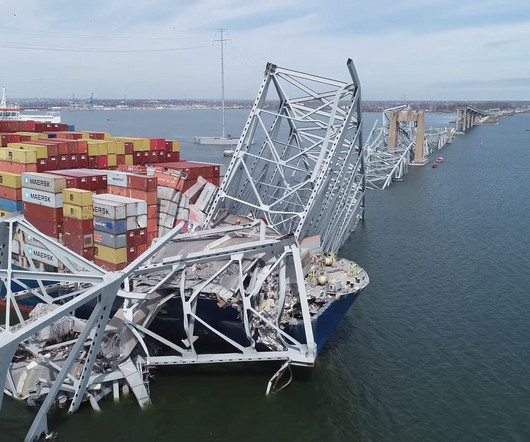Baltimore Bridge Collapse: An Opportunity to Reinforce the Importance of Supply Chain Resilience
Logistics Viewpoints
APRIL 10, 2024
The port handles about 11 million tons of cargo per year, including automobiles, containers, coal, and farm products. For example, a robust supply chain may have backup power generators, firewalls, security systems, and emergency plans to prevent or mitigate the effects of disruptions.
















Let's personalize your content